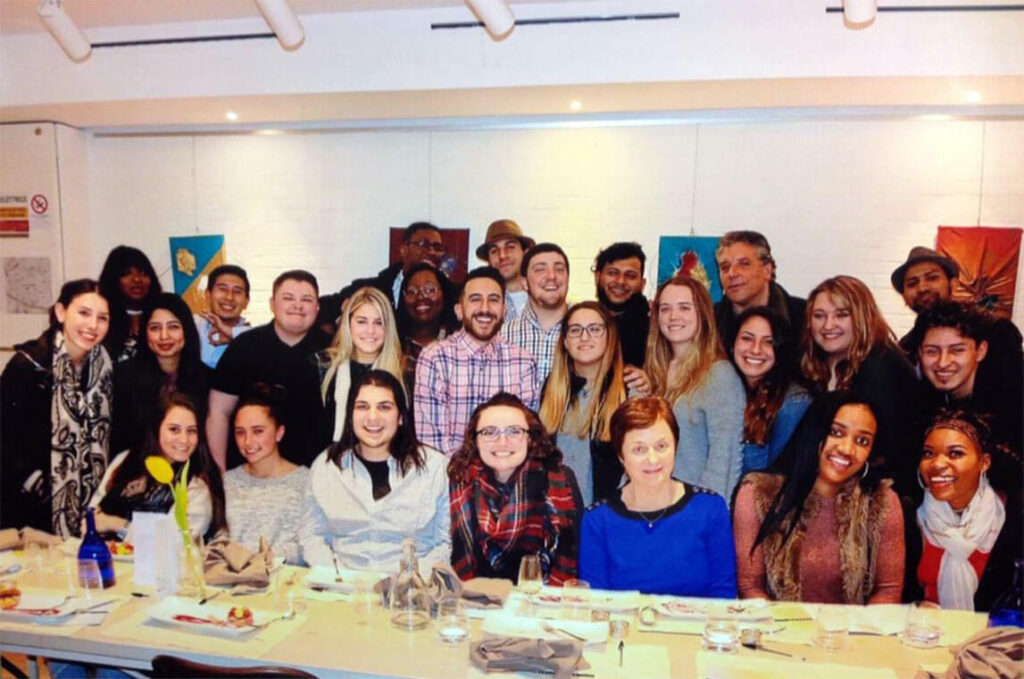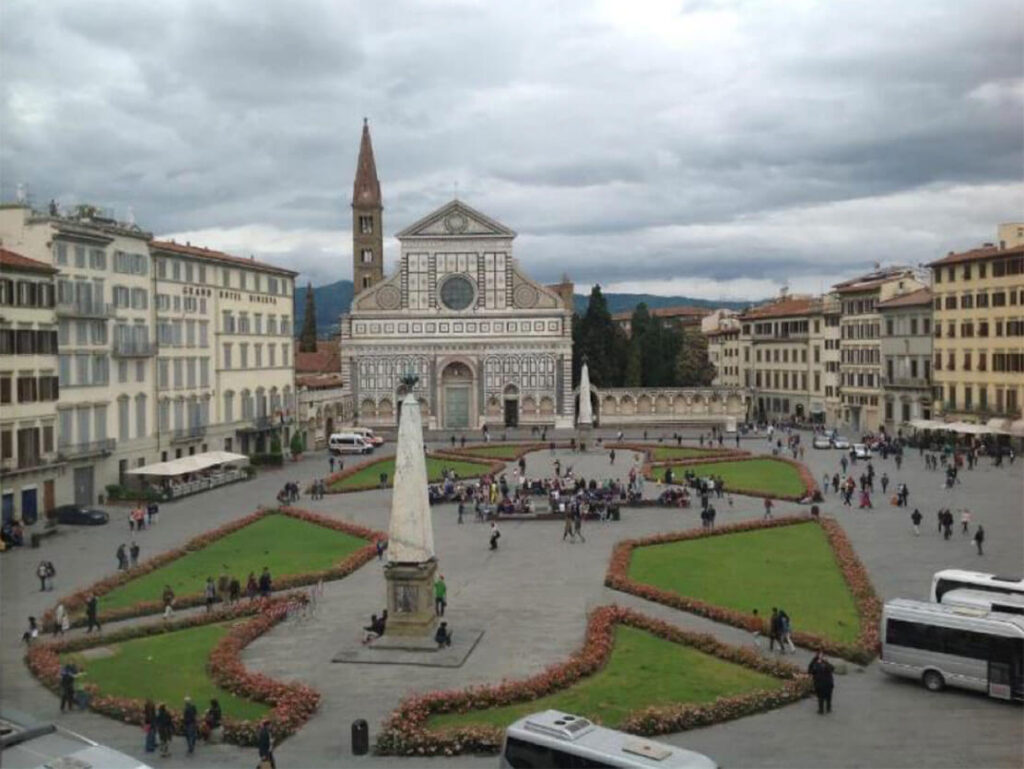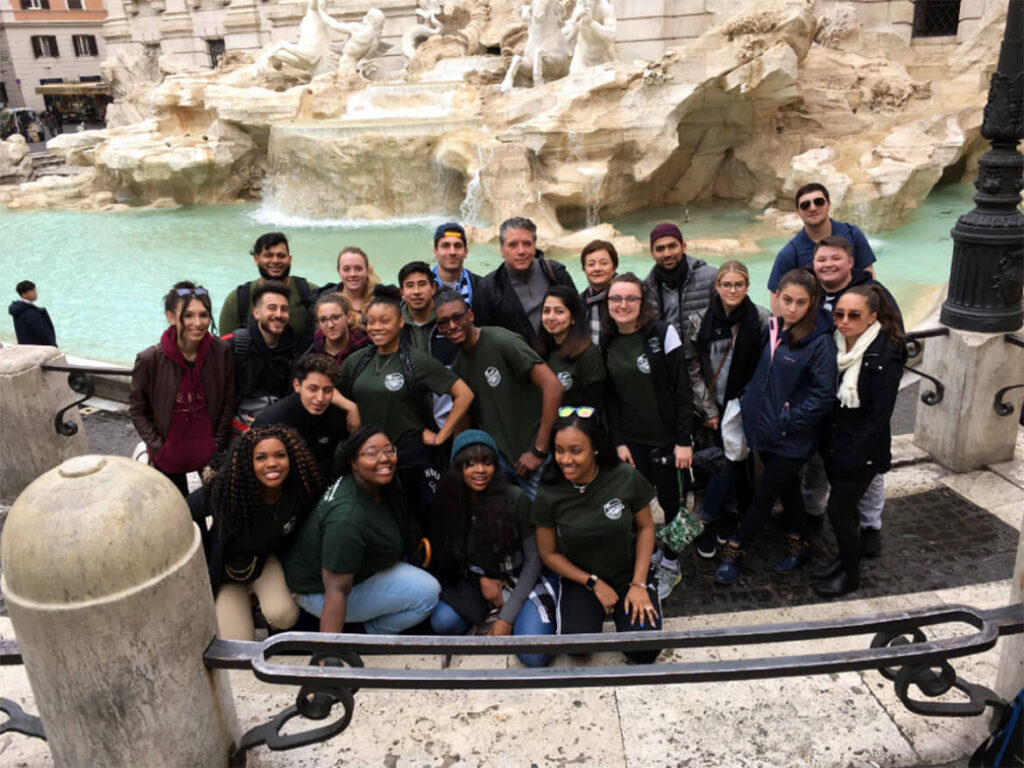Exploring Italy: A Powerful International Applied Learning Experience Offered by Farmingdale State College
Published in:
November 16–17, 2018
Stetson University
Miami, Florida
During the spring semester of 2018, we joined our two classes to offer an interdisciplinary learning experience to students at Farmingdale State College. The idea was to blend Machiavelli and Michelangelo, Garibaldi and Giotto, Cavour and Caravaggio, the Borgias and Botticelli, the Medici and Masaccio. The highlight of this powerful applied learning experience was a ten-day exploration of Italy during the 2018 spring break.

Farmingdale is a SUNY college of applied science and technology. Most of the 9,500 undergraduate students are commuters who miss out on the community-building experience that comes more easily for residential students. Moreover, our students—like most students these days—are career-oriented and concentrate on such majors as bioscience, electrical engineering, and business.
Many students do not fully embrace the ideals of a liberal arts education nor appreciate interdisciplinary exploration through collaborative learning, critical thinking, and hands-on applied learning. The adventure of study abroad, however, can entice even the most narrowly-focused students to see things differently and to have the type of powerful liberal arts experience that transforms them into interdisciplinary thinkers (even if they don’t appreciate such lofty goals when signing up for a chance to go to Italy!).
Our recruitment efforts focused primarily on first-year and second-year students who would be able to complete some of their general education requirements by enrolling in one or both of our lower-level general education courses:
ART 242 – Renaissance Art History (a course that meets a humanities general education requirement and also counts toward the visual communication major)
POL 273 – Italian Politics and Society (a course that counts as a western civilization general education requirement)
A total of 25 students registered for our courses. Nine students elected to enroll in both courses. The two courses met back-to-back on Fridays during the semester. Each course met for 2 1⁄2 hours each Friday while on campus.
While in Italy, our students had a taste of a residential college experience by rooming together in hotels in Rome and Florence. They also formed friendships and bonds by touring together. But, most importantly, they engaged in powerful hands-on learning experiences that their instructors designed. Both instructors are Italian experts and speak Italian. We have lived, traveled, and worked in Italy off and on for many years. With that background, we designed a truly interdisciplinary exploration of Italy.
In order to achieve interdisciplinarity during our tour of Rome, Florence, and Siena, we asked our students how the legacy of the Roman Empire and the appeal of antiquity can be seen throughout Italy—not only during the Renaissance, but also today. They saw connections:
- how the ideal of national unity (inspired by the memory of the Roman Empire) can be found in the 19th-century Risorgimento movement that created modern Italy; in Mussolini’s 20th-century fascist myth of the “Third Rome”; and perhaps even in the vision behind the creation of today’s European Union
- how ancient Roman sculpture is reflected in Michelangelo’s David and in Renaissance equestrian statues
- how the tradition of spectacle (with roots in the drama of games and events that took place inside the ancient Roman Colosseum and Circus Maximus) can be seen in today’s devotion to opera and soccer

- how the skill in public oratory that dates from Cicero can be heard in the speeches delivered today in the Italian senate
- how the tradition of coronating Roman heroes with laurel wreaths continued with the laurel wreath coronation of poets during the Renaissance and is found today in the “coronation” of university students when they graduate
- how ancient Roman and Greek mythology impacts the art of Giambologna, Donatello, and Bernini
- how traditions in landscape architecture continue today with gardens adorned with artificial Roman temples and sculpture

- how the ancient Pantheon’s dome inspired Brunelleschi’s dome of the Florence Cathedral which later inspired Michelangelo’s dome of St. Peter’s
- how the ancient Roman Forum as a public space is replicated in Bernini’s urban designs and fountains that in turn inspire modern urban planning in Italy that places a premium on the piazza
Throughout our ten days in Italy our students kept journals and pieced together what they saw and learned through discussion, problem-solving, and critical thinking. By transporting them into a new country, we transformed their ways of seeing and learning. Study abroad—even if only for 10 days—can be a powerful liberal arts experience.

When thrust into another society and immersed in another culture (especially a non-English-speaking culture), our students are challenged to see things differently and to encounter ideas, experiences, and perspectives that are outside their normal worldview. Such challenges are a fundamental part of what a university education is all about.
Spring 2019: Transforming Teaching Through Active Learning
